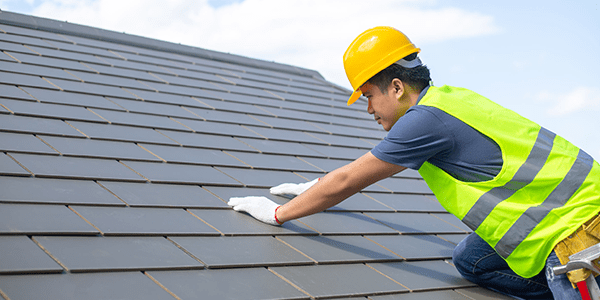Summer has come and gone and with temperatures continuing to dip, winter is well on its way. Now is the perfect time to ask yourself whether your commercial building is ready for heavy rain or in some cases, snow and ice. From an immediacy standpoint, clogged drains, membrane damage, and ponding water are just a few potential problems that could result in minor issues turning catastrophic very fast. Let’s take a deeper dive into how you can winter-proof your commercial roof and minimize threats that could result in compromised safety and damage to your bottom-line.
Conduct a facility wide inspection
Staying up to date with the condition of your building/facility is paramount. Whether you’re a business owner or facility manager, staying abreast of the health of your premises through consistent and meticulous maintenance procedures prevent minor problems from snowballing into costly, large-scale operations. Be sure to consistently reference and keep records of your building’s maintenance and repair history in order to understand the full picture. If your roof has seen little to zero maintenance for many years or you don’t know its service history, you’re walking on thin ice because over the years it will naturally have amassed a myriad of issues due to wear and tear. On the other hand, if there is a lack of documentation, you should immediately engage facility management professionals to conduct a comprehensive inspection. Temperature swings between daily highs and lows can take its toll weakening the integrity of your roof’s structure and materials during this time of year. It’s especially vulnerable to damage if there is water/ice or snow already on the roof. Ice dams formed at the transition points between warm and cold roof surfaces and ponded water surrounding your roof can damage membranes or other materials as it goes through freeze, thaw, and refreeze cycles.
Though it may seem inconceivable, partial collapses due to severe leaks or snow occur every year, and these preventable emergencies can quite literally destroy your business, your reputation, and cause injury to your employees and guests.
Your checklist
- As previously stated, it’s important that you document all of your maintenance related service history. These files should comprise of documentation of the roof’s original installation, such as plans and specs, invoices, the installing contractor’s contact information, warranties, maintenance and inspection reports, repair bills, and samples of products. Such literature can be extremely helpful when repairs are made by new contractors or new equipment or material is added to your roof.
- Conduct at minimum, one yearly inspection. Ideally there should be two: one in the spring and one in the fall. More importantly, inspections should also be performed after severe weather periods. For example, in the event of a hail storm and or heavy downpour where debris becomes airborne or large quantities of water was recorded, have your maintenance staff immediately look for any damages.
- Be aware of accumulating debris on your roof. As homeowners, we’ve all experienced how leaves and branches can block drains and scuppers creating ponds and adding unnecessary weight and pressure. The same can be said for commercial roofs, but on a vastly larger scale. Simply put, your roof should always be kept clear of unnecessary items or debris.
- HVAC related roof damage caused by maintenance workers (as well as other trades) is one of the most common issues that can arise. This is why it’s important that you make sure they are taking extra precaution during routine maintenance procedures. HVAC panels have sharp corners that can puncture a membrane and as such, proper rooftop protection should be deployed. Condensation from HVAC systems can also cause significant ponding so be sure to install a piping system that will distribute condensation directly to drains so it will not flow across the roof’s surface.
- During routine maintenance inspections, make sure your facility maintenance contractors are thoroughly inspecting the entire field of the roof. Check for seam problems, such as fishmouths and missing sealant, as well as surface degradation and punctures. Check for corrosion on metal flashings and counter-flashings, missing or loose fasteners, and damaged laps. Soft spots on the roof’s field is a clear indication of wet insulation and moisture issue. Take care of it immediately.
What we can do for you
If you are looking for a facility management company or your current contractor is not meeting your expectations, Sierra Group offers one-stop maintenance and assessment services ranging from ground up construction to minor repairs with a “one call” service center that is ready to dispatch a certified technician to your facility for projects of all scopes.
Our Commercial building maintenance program includes:
- Monthly property building service visits by a Sierra Group technician
- Assigned dedicated Project Manager for facility maintenance requests
- Complete interior & exterior lighting services
- Hardware service & repairs
- Minor electrical & plumbing
- T-Bar ceiling and tile repairs
- Cable control
- Touch-up painting & graffiti removal
- Banner hanging & periodical replacement
- Unique and special tasks exclusive to client
Reach out to us and learn more about the Sierra Group difference.








